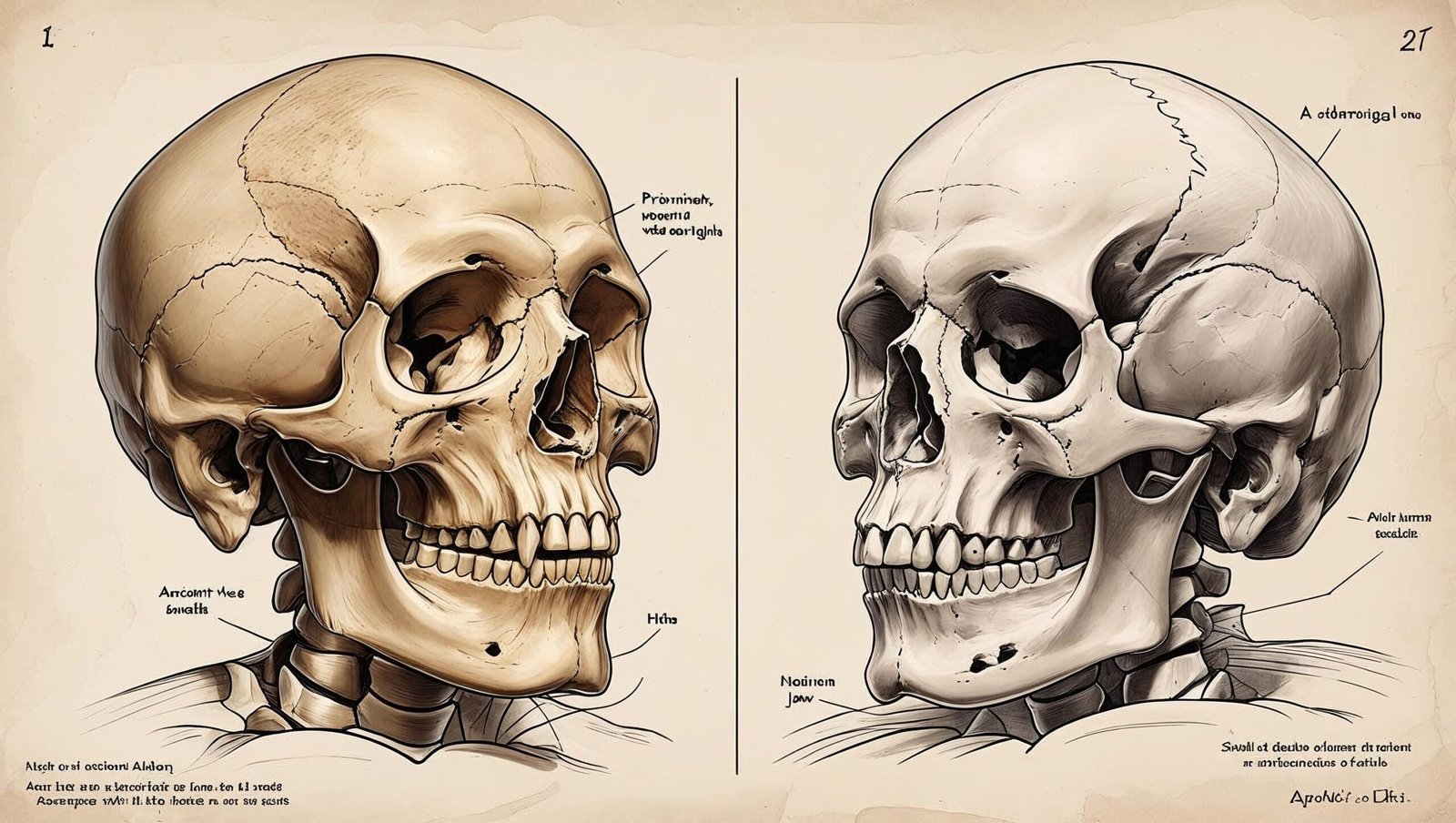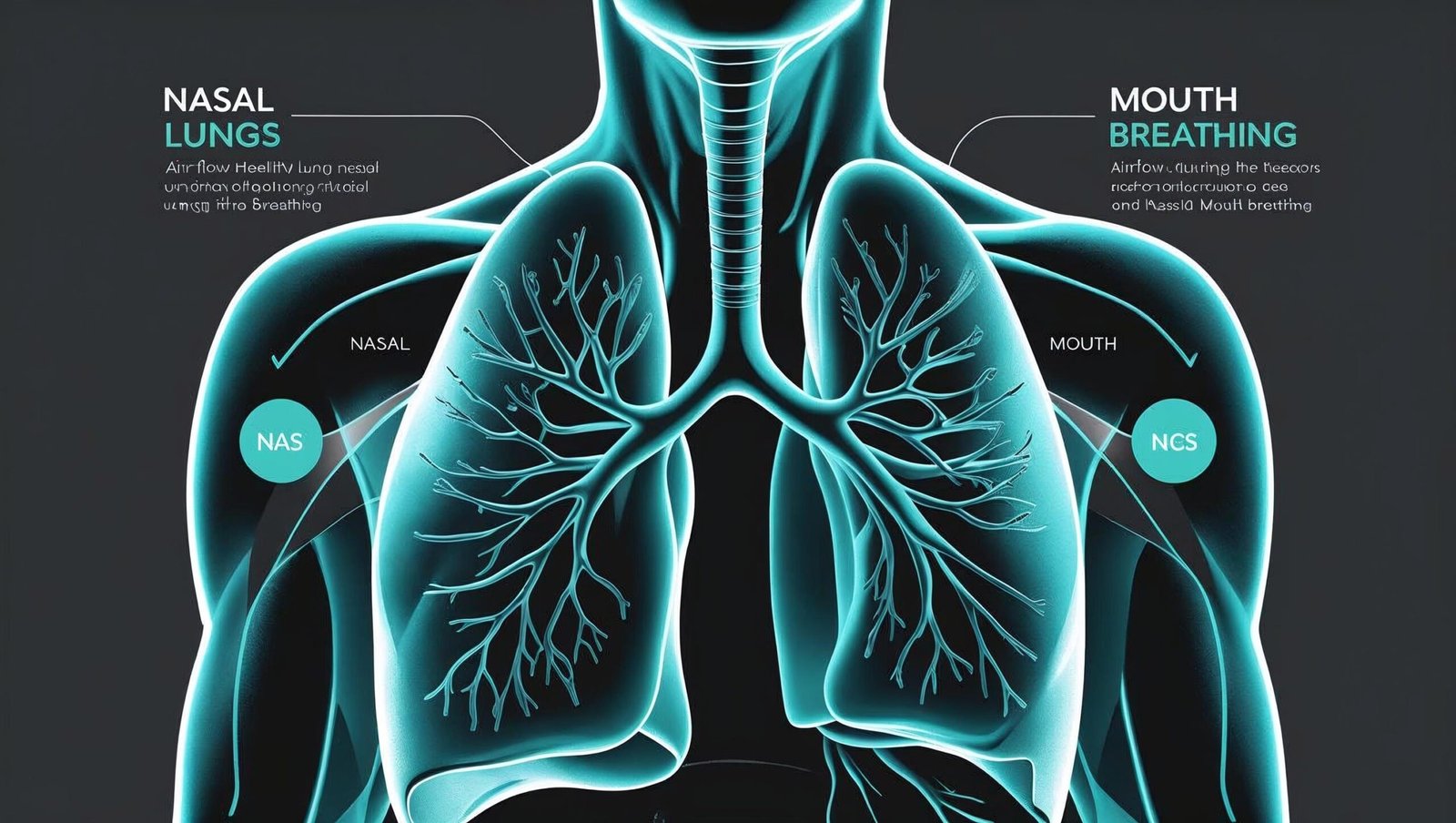Breath by James Nestor: 11 Shocking Truths That Will Change How You Breathe Forever
Breath by James Nestor is not merely a book; it is a revelation. It exposes a vital truth we have long neglected—the way we breathe is silently shaping our lives. In this transformative narrative, Nestor presents compelling scientific research, historical evidence, and self-experimentation to prove that modern humans have forgotten how to breathe properly. With precision and humility, he invites readers to reclaim the lost art of breathing, a subject seemingly mundane but profoundly life-changing.
In this comprehensive review, we will examine the essential themes, major takeaways, and paradigm-shifting lessons that make Breath by James Nestor a modern classic in health literature.

Introduction to Breath by James Nestor
James Nestor, a journalist and science enthusiast, embarks on an ambitious journey across the globe to understand one simple yet powerful question: Are we breathing wrong? The author explores ancient wisdom, scientific discoveries, and even extreme practices to expose the decline in respiratory health across modern civilization. Breath by James Nestor is an urgent call to action—highlighting the dangers of improper breathing and the solutions to reclaim our wellbeing.
This meticulously researched book combines storytelling and science, making it accessible and compelling for a wide range of readers. Nestor’s journey takes him to secret Soviet facilities, Indian ashrams, and underground Parisian catacombs—all in search of the breath we lost.
Chapter-Wise Summary of Breath by James Nestor
Chapter 1: The Worst Breathers in the Animal Kingdom
The book opens with the shocking revelation that humans are among the worst breathers in the animal kingdom. Nestor investigates how evolutionary changes in our facial structure have impaired our breathing. The author introduces us to researchers who show how poor breathing habits contribute to diseases, mental decline, and reduced physical performance.
Chapter 2: Mouth vs. Nose Breathing
In this chapter, Breath by James Nestor outlines the dangers of mouth breathing. Through experiments and studies, Nestor demonstrates that breathing through the nose filters, humidifies, and optimizes air intake. Mouth breathing, conversely, can lead to snoring, sleep apnea, and even facial deformities.
Chapter 3: The Slow Breath
This chapter introduces the concept of slow breathing, where the author highlights how reducing breaths per minute to around 5.5 significantly improves health markers. Nestor shows that slow, rhythmic breathing can lower blood pressure, increase lung capacity, and promote calmness.
Chapter 4: The Lost Art
Nestor explores ancient breathing techniques practiced in cultures such as Hinduism’s Pranayama and Buddhism’s meditative breath. He reveals how modern medicine has overlooked these techniques, despite their scientifically proven benefits.
Chapter 5: Exhale
In “Exhale,” the emphasis is placed on the importance of fully exhaling. Nestor shows that exhalation is not just passive but essential for removing toxins and achieving balance in the nervous system. Breath-holding and prolonged exhalations trigger physiological transformations that support mental clarity and physical endurance.
Chapter 6: Chew
Here, the author makes a surprising connection between jaw development and breathing. Chewing tougher food aids jaw growth, which in turn allows for wider airways. The modern diet of soft foods has, over generations, weakened our jawlines and constrained our breathing capacity.
Chapter 7: Nose
Nasal breathing is revisited with deeper scientific insight. The sinuses produce nitric oxide, which enhances oxygen absorption. Breath by James Nestor convincingly shows that simply breathing through the nose can boost immunity, mental performance, and even sexual function.
Chapter 8: Breathing to Heal
This chapter focuses on the therapeutic potential of conscious breathing. Techniques such as Buteyko breathing, Wim Hof Method, and Sudarshan Kriya are explored in detail. Nestor interviews practitioners and medical professionals who use breath as a primary healing modality.
Chapter 9: Hold It
Nestor pushes the envelope by studying breath-holding techniques practiced by free divers and monks. These practices improve lung capacity, heart rate variability, and even emotional resilience. The evidence is both scientific and experiential.
Chapter 10: The Fast Breath
The paradox of rapid breathing techniques like Tummo and holotropic breathwork is examined. Though seemingly aggressive, these practices serve to unlock trauma, induce altered states of consciousness, and reset neurological patterns.
Chapter 11: A New Way of Breathing
The final chapter ties together all threads and emphasizes practical daily breathing habits. James Nestor encourages integrating breathing techniques into daily life—not as a chore but as a return to our biological blueprint.
The Deeper Science Behind Breath
In a world increasingly dominated by pharmaceuticals and high-tech interventions, we often forget the primal tools that lie within our reach. Among these, breath stands as the most underutilized. Yet, Breath by James Nestor opens a forgotten doorway—reminding us that this natural function is not only vital for survival but also for thriving.
At its core, the book teaches us that the breath is not merely mechanical but rhythmic, dynamic, and adaptive. Breathing patterns, when consciously regulated, can influence physiological systems in measurable ways. In clinical studies, patients who practiced diaphragmatic breathing saw reduced levels of cortisol, increased vagal tone, and improved immune responses. These are not speculative claims but grounded in reproducible science.
Carbon dioxide, which we are trained to think of as a waste gas, plays an integral role in enabling oxygen delivery to tissues. Nestor elaborates that shallow or rapid breathing reduces CO₂ levels in the blood, leading to vasoconstriction and limited oxygen availability to organs. This misunderstanding of respiratory chemistry is not just academic—it is a matter of public health.
Historical Neglect and the Rise of Dysfunctional Breathing
An unsettling truth revealed in the book is how industrialization and modern comfort have reshaped our facial anatomy. Foods that once required rigorous chewing—roots, raw vegetables, nuts—were replaced by soft, processed substitutes. The reduced strain on our jaws meant that the bones didn’t develop to their full potential. The result: narrower airways, smaller mouths, and consequently, compromised breathing.
This revelation, chronicled through archaeological records and anthropological studies, highlights that our ancestors were superior breathers. Their skulls showed evidence of wide dental arches and unobstructed nasal passages. In contrast, the modern human skull often displays crowding of teeth and misaligned jaws—an anatomical disadvantage that directly impacts breathing quality.
Breath by James Nestor doesn’t just point fingers at historical trends. It prompts action. It’s a plea to restore what’s been lost—not through high-cost interventions but through awareness, habit changes, and a conscious return to nature’s original design.

The Psychological Repercussions of Improper Breathing
We often treat anxiety, depression, and insomnia with medication, overlooking the role of respiration in psychological wellness. The book brings to light how dysfunctional breathing contributes to heightened sympathetic activity, often referred to as “fight or flight mode.” When we breathe in a shallow or erratic manner, the nervous system interprets it as a signal of distress, even in the absence of an actual threat.
One of the most compelling stories in the book involves individuals suffering from chronic anxiety who experienced substantial relief simply by shifting their breathing from the chest to the diaphragm. This technique, though ancient in its origins, is now supported by neurological research.
It turns out that deep, slow breathing can stimulate the parasympathetic nervous system, responsible for rest and digestion. This modulation of autonomic balance fosters emotional regulation, better sleep, and mental clarity—benefits that pills often promise but seldom deliver without side effects.
The Breath in Spiritual and Cultural Contexts
What makes Breath by James Nestor profoundly multidimensional is its acknowledgment of breathing practices across diverse cultures. From Hindu Pranayama and Taoist Qi Gong to Indigenous American breath rituals, civilizations throughout history revered breath as a conduit to higher consciousness.
In India, yogic traditions emphasized breathing not only for physical vitality but also for spiritual awakening. Techniques like Nadi Shodhana (alternate nostril breathing) or Bhastrika (bellows breath) were designed to cleanse energy channels, balance hemispheric brain activity, and promote inner peace.
Nestor pays homage to these traditions not as exotic curiosities but as validated techniques. Through modern tools such as fMRI and pulse oximetry, he shows how these ancient systems were uncannily accurate in understanding human physiology long before Western science caught up.
It is a rare achievement to bridge biochemistry and mysticism, yet the book does so with elegance and objectivity. Whether you are a rationalist or a spiritual seeker, this book offers a synthesis that enriches both perspectives.
The Economics of Breathing
Another unspoken dimension explored in the book is the economic impact of poor breathing habits. Millions of dollars are spent annually on treatments for diseases rooted in respiratory dysfunction—chronic fatigue syndrome, asthma, sleep apnea, hypertension. These ailments, as the book suggests, are not always the result of irreversible damage but often stem from habits developed unconsciously over time.
A fascinating example is the skyrocketing industry of CPAP machines for sleep apnea. While these devices provide symptomatic relief, they do not address the root cause—habitual mouth breathing or narrowed airways. Techniques presented in Breath by James Nestor such as taping the mouth at night to encourage nasal breathing have, for some patients, rendered expensive equipment unnecessary.
The implication is powerful: healthcare need not always be expensive or invasive. Sometimes, healing begins with something as rudimentary as changing how we breathe.
Integration Into Modern Lifestyles
Implementing the lessons from the book doesn’t require monumental shifts. Small, consistent changes can lead to significant improvements. Consider the following:
-
Five minutes of slow nasal breathing before bed can enhance sleep quality.
-
Switching from mouth to nasal breathing while walking or exercising can improve endurance.
-
Chewing more fibrous foods like carrots, apples, and nuts can assist in jaw development in children.
Workplaces can benefit too. Companies now invest in corporate breath training programs to combat burnout and enhance productivity. Schools are slowly incorporating breath awareness into curriculums to improve focus and emotional regulation among students.
The message is clear: proper breathing is not an esoteric concept. It is a universal tool for better living, and its implementation is both feasible and effective.
The Narrative Style: Accessibility with Depth
A noteworthy strength of Breath by James Nestor is its narrative style. The prose is lucid, interspersed with anecdotes, scientific references, and dialogues with experts. It avoids the pedantic tone common in medical texts and instead opts for a journalistic voice—engaging yet informative.
This stylistic choice makes the book digestible for laypersons without sacrificing intellectual rigor. Whether you’re a health professional, a fitness enthusiast, or simply a curious reader, the book caters to all without alienation.

Why Breath Still Remains Misunderstood
Despite mounting evidence, the role of breathing in health continues to be underemphasized in medical education and public discourse. Rarely does one hear of breath retraining in primary healthcare or as part of rehabilitation protocols. This absence, as Breath by James Nestor underscores, is not only negligent but dangerous.
Medical practitioners often treat symptoms—fatigue, high blood pressure, insomnia—without examining respiratory patterns. Breath retraining, although low in cost and risk, is seldom suggested. This book, therefore, becomes not just a health guide but a critique of modern medicine’s compartmentalization.
Summary of the Extended Reflection
-
Breath is an instrument of health, balance, and even transcendence.
-
Cultural history, evolutionary biology, and clinical science all point to the centrality of breath.
-
Implementation of breathing techniques is simple, cost-effective, and sustainable.
-
Breath by James Nestor emerges as a guide, a critique, and a manifesto.
Reaffirming the Message
Having now engaged in a deeper exploration, we can confidently assert that Breath by James Nestor is more than a bestseller—it is a movement. It reminds us of something ancient yet urgent. It is not enough to breathe; we must learn to breathe well. For in our breath lies a silent power—neglected, misunderstood, and waiting to be reclaimed.
You can always return to shubhanshuinsights.com for more evidence-based reflections, in-depth reviews, and insights that challenge conventional thinking.
Key Takeaways from Breath by James Nestor
-
Nasal breathing is superior in every way to mouth breathing.
-
Breathing slowly and deeply is the key to longevity and calm.
-
Modern diets and lifestyle habits have physically reshaped our airways.
-
Breathing can be used therapeutically to combat diseases and mental disorders.
-
Practicing breath awareness daily can lead to substantial physical and emotional benefits.
Each of these insights reveals how deeply intertwined our breath is with the quality of our existence. Breath by James Nestor is not a recommendation; it is a prescription for a better life.

Who Should Read Breath by James Nestor?
-
People suffering from asthma, sleep apnea, or anxiety
-
Athletes aiming to boost endurance and stamina
-
Meditators and spiritual seekers
-
Anyone feeling exhausted, restless, or unfulfilled
In essence, Breath by James Nestor is for everyone who breathes—which is to say, all of us.
Strengths of Breath by James Nestor
-
Readable and engaging: Complex science is simplified without being diluted.
-
Visually captivating: Charts, diagrams, and illustrations aid understanding.
-
Multidisciplinary approach: Merges history, medicine, spirituality, and anthropology.
-
Practical applications: Each chapter provides actionable insights.
Criticisms and Limitations
While the book is overwhelmingly beneficial, some critics argue:
-
Certain claims lack long-term studies for validation.
-
Nestor’s self-experiments, though brave, are anecdotal.
-
The narrative occasionally shifts focus from science to sensationalism.
However, these critiques do not undermine the overall significance and value of Breath by James Nestor.
Impact of Breath by James Nestor on Global Health Consciousness
Since its publication, the book has sparked a renaissance in breathing practices worldwide. Yoga instructors, therapists, athletes, and everyday readers have begun to rethink and retrain their breath. Schools have started incorporating breathing lessons for children. Hospitals are exploring breathwork for patient recovery. This is more than a health fad—it is a cultural correction.

Author Background: Who is James Nestor?
James Nestor is an American journalist who specializes in science and health writing. His works have appeared in Scientific American, Outside Magazine, and The New York Times. With Breath by James Nestor, he transitions from observer to participant, committing to a multi-year research journey that involved personal sacrifice and intellectual tenacity.
FAQs about Breath by James Nestor
Q1. Is “Breath by James Nestor” suitable for beginners in science or health?
Yes, the book is written in accessible language, making it ideal for beginners.
Q2. Does the book offer actionable techniques?
Absolutely. From slow breathing to nose breathing and breath-holding, the book is filled with practices.
Q3. Is it similar to meditation books?
While it overlaps with meditation in terms of breath awareness, the book is rooted more in science than philosophy.
Q4. Can “Breath by James Nestor” help with stress?
Yes. The breathing techniques described are proven to reduce cortisol levels and enhance calm.
Q5. Is this book recommended by medical professionals?
Many integrative and functional medicine practitioners endorse its teachings.
Final Verdict: Should You Read It?
Yes. You should not only read Breath by James Nestor—you should absorb it, implement it, and share it. This book is a gateway to a healthier, calmer, and more conscious life. It will recalibrate how you think about something as mundane and vital as your breath.
Conclusion
In a time when the world is gasping—whether due to stress, pollution, or pandemics—Breath by James Nestor comes as a breath of fresh air, quite literally. It reconnects us with a basic biological function we have taken for granted. The power to heal, to energize, to calm, and to transform lies not in a pill or a diet but in the breath itself.
Let this not just be a book you read and forget. Let it be the breath you never again take for granted.
Visit shubhanshuinsights.com for more transformative book reviews and health insights.
Powerful Reader Comments
“This book changed my life. I never realized I was breathing wrong until now. Thank you for this incredible review!” — Priya Malhotra
“Astounding how something so basic can be so powerful. A must-read for everyone. Brilliant summary.” — Rohit Anand
“Your review captures the soul of Breath by James Nestor. Inspired me to buy the book immediately!” — Sonal Verma
“The scientific rigor and simplicity of the review reflect the book itself. Impressive work.” — Dr. S. Tiwari